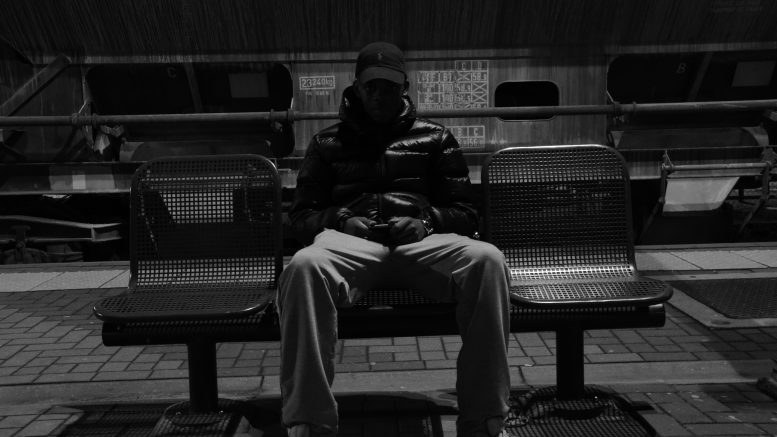‘Blockbuster’ ruling hits lending giant with $46 million for Kafkaesque tactics
The young boy playing piano inside his house suddenly looked up. A man he’d never seen before was peering at him through a sliding glass door. The man began pounding on the glass, yelling at the boy to let him inside. The 10-year-old raced down the hall in a fit of tears.
For the boy’s parents, Erik and Renee Sundquist, this encounter with a stranger was about to morph into an ongoing nightmare. According to a federal bankruptcy judge’s ruling last month, the Sundquist family was “stalked” throughout the summer of 2010, with people watching them from parked cars for hours at a time, tailgating them through their neighborhood before speeding off, peering through their windows and sometimes lurking around their house to the point the Sundquists called personal security.
But even more startling is who was employing these shadowy figures.
According to the 109-page ruling from U.S. bankruptcy Judge Christopher Klein, it was one of the nation’s largest financial institutions, Bank of America. And the bank’s tactics were part of an extraordinary, years-long effort to bully the Placer County couple into foreclosure during the height of the economic recession, the judge asserted in a ruling that has dropped jaws around Sacramento’s legal community.
Terence Kilpatrick, a local attorney who works in bankruptcy and foreclosure law, called Klein’s opinion “truly a blockbuster.”
“[T]his is just one example of what the big banks did to people during the economic downturn,” Kilpatrick, who wasn’t associated with the case, wrote in an email. “The Sundquists are the only ones to my knowledge who have succeeded in taking their case to trial and to a judgment that exposes such actions.”
But the couple’s travails aren’t over. And the financial regulations that are meant to protect people like the Sundquists are starting to erode under the Trump administration.
Following a lengthy civil trial, Judge Klein assailed Bank of America for hounding the Sundquists to the point that Erik considered suicide and Renee suffered a stress-induced heart attack. The judge awarded the family more than $1 million in damages, then tagged Bank of America for another $45 million in punitive fines—decisions that the bank is appealing.
When Klein tried to encapsulate the existential “nightmare” he believed the Sundquists experienced, he reached for a specific literary allusion, one where average people are crushed by faceless, nameless forces that strike from an absurdist labyrinth with dizzying traps of deceit.
“Franz Kafka lives,” Klein wrote. “[H]e works at Bank of America.”
The Castle

The Sundquists were raising their young twins in Loomis in 2008 when the economy tanked. Erik owned a construction business and tried to stay ahead of the building industry’s collapse by downsizing. He and Renee set their sights on a more modest dwelling in Lincoln. They had a $125,000 down payment, but the monthly mortgage rate was still out of their price range. There was also an all-cash offer from another buyer. A broker working for the Sundquists assured them that they could refinance or modify the loan immediately.
Erik and Renee took out the loan on the new property while its note and deed came under the ownership of Bank of America. The Sundquists never missed a payment, though they were barely keeping up. Later, according to the judge’s findings, when the Sundquists contacted BofA for their loan modification, they were given startling news: Bank officials said they’d consider changing the loan only if the Sundquists defaulted on three months of payment in a row. For the couple, who had a credit score above 800 at the time, the demand made no sense.
“They’d never paid a bill late,” said Denise Henderson, the Sundquists’ attorney. “It was astonishing to them when they were told to stop paying. That sounded insane and, as it turned out, it was insane.”
The Sundquists followed the bank’s advice and stopped paying. Henderson’s case files lay out what happened next: UPS receipts, tax records and third-party letters show some 20 successive attempts by the increasingly desperate Sundquists to comply with BofA’s loan modification process. The applications they sent, starting in 2009, were repeatedly lost by the bank or sent back with confusing notes or deemed stale by the time bankers got around to looking at them.
Meanwhile, BofA started a foreclosure process on the family—even as other bank employees were allegedly informing Erik and Renee that they could still modify their loan. A series of vacate notices eventually forced the couple to file for bankruptcy. By law, that filing should have put the foreclosure process on hold. But bank officials admitted seizing the Sundquist house on June 15, 2010, one day after they received notice of the Chapter 13 filing, Judge Klein wrote in his ruling.
“[It was] apparent to anyone at Bank of America who cared to look,” Klein wrote of the company’s violation of bankruptcy law. “Nobody at Bank of America cared to look.”
For the Sundquists, the real nightmare hadn’t started yet. Over the summer of 2010, strangers began following them and constantly attempting to serve them with illegal eviction notices. When, on August 19, 2010, a BofA representative brought the Sundquists a three-day notice to leave the property, he reportedly did so by throwing the papers so hard against the door “they ricocheted some three feet.”
“It was such a loud bang I could hear it in my kitchen,” Renee wrote in a journal entry that was admitted into evidence at trial. “I just stood shaking and could barely call Erik. … BOA steals another night from my family.”
At this point, Henderson’s law firm intervened.
“Every time they got served, it was another stick hitting them,” the former public defender said of her clients. “They stopped having friends over. They were very isolated. It was very much like being in an abusive relationship.”
Henderson confronted BofA officials about the unlawful foreclosure. Their response, according to both Henderson and Klein’s ruling, defied belief.
The bank returned the ownership of the house to the Sundquists without telling them or their attorney. The Sundquists had already moved out due to the threat of being removed by law enforcement. It wasn’t until seven months later that Erik discovered, by checking county records, that he indeed owned the house again. And he also owed BofA money again.
The bewildered couple returned to the premises of their abandoned home to discover their cook-top oven, built-in refrigerator, washer and dryer had all been stolen. Their landscaping was long dead. Even worse, they now had a $20,000 bill for nonpayment and fines from their homeowners association, after Bank of America employees neglected to keep up those obligations.
“All that sadness came back,” Renee wrote in her journal, “all that pain of leaving, losing, sickness.”
SN&R contacted Bank of America about the host of accusations against its employees and representatives, all of which Klein legally determined had happened. BofA spokesman Rick Simon responded in an email, saying, “The loan in question goes back nearly a decade, and the foreclosure at the center of the claim to 2010, at the earliest stages of the economic crisis. The processes in place at the time were subsequently modified; regrettably our performance in this particular case was unsatisfactory.”
Simon’s only comment about the findings related to deception, harassment and stalking was, “We believe some of the court’s rulings are unprecedented and unsupported.”
The Metamorphosis

A day after her mother died, in 2012, Renee found another eviction letter. Bank of America’s enveloping tactics were overwhelming the family. Erik fell into a suicidal depression. Renee suffered nonstop headaches and, according to evidence presented at trial, a stress-induced heart attack. The fear in their kids’ eyes, the pity and resentment from neighbors, the bizarre monitoring from strangers, were all taking a toll.
Henderson filed a lawsuit against the bank on behalf of the Sundquists that ultimately landed in federal bankruptcy court that same year. That made it Henderson’s turn to experience the Kafkaesque ordeal. She told SN&R that BofA’s attorneys engaged in “a pattern of defense and coverup,” including failing to provide discovery evidence and the names of employees she wanted to depose until the court compelled them. Henderson said what was handed over tended to be the same over-redacted documents as before, just filed in a different order. Henderson even wanted one BofA official fined for perjury and contempt of court. That didn’t happen.
But what did happen is that, after five years of delays, the Sundquists got their day in court.
“They did everything they could to try to stop this case from being heard,” Henderson said of BofA’s lawyers. “And trials are about someone finally being heard.”
Renee allowed her personal life to be laid bare by admitting her journal into evidence. Erik broke down on the witness stand. Later, throughout his written opinion, Klein noted that he found both plaintiffs highly credible, while also referencing myriad documentation that backed up their accounts. Klein wrote that BofA’s misconduct, at one point, “strayed across the civil-criminal frontier,” adding that, “in contrast, the Sundquists have clean hands.”
The Sundquists are one family in a pool of thousands that saw their financial lives evaporate under the practices of Bank of America during the recession.
In 2014, President Barack Obama’s Justice Department compelled the lending giant into a $16.65 billion settlement with federal and state officials for the mass selling of toxic mortgages on the eve of the recession. The settlement against BofA was for actions it engaged in, along with those of its subsidiaries, Countrywide Financial Corporation and Merrill Lynch.
What a difference three years makes. In February, President Donald Trump announced his intention to roll back the Dodd-Frank Wall Street Reform and Consumer Protection Act, which lawmakers crafted to rein in threats to the financial system, especially the practices that obliterated middle-class savings, retirement accounts and equity during the meltdown. Trump also sent an official memorandum to the U.S. Labor Department ordering it to consider repealing the Fiduciary Rule, which requires stock brokers to act in their clients’ best interests over the brokers’ own personal gains.
“It’s a signaling issue,” said Justin King of New America, a Washington, D.C., think tank that advocates for low-income and middle-class families. “If these rules are rolled back, it sends a sign to the business and financial sector that says, ’We’re going to be taking the cop off the beat and trusting you to treat your customers fairly.’”
Klein’s $46 million judgment against Bank of America is one of the largest affirmations that the Wall Street powerhouse hasn’t always treated its customers fairly. However, the judgment is also an outlier, according to Renata Pumarol of the Committee for Better Banks.
“Unfortunately, these victories do not happen often,” Pumarol told SN&R in an email.
The Judgment

In an over-lit, sixth-floor courtroom in Sacramento, Judge Klein swivels behind the bench with his chin resting on his palm. Sitting below him, on one side, are the Sundquists. On the other, two BofA lawyers. Today, April 18, is the moment the lending titan officially begins to appeal the penalties Klein handed down. The judgment stipulates that the bank pay $1,074,581 in damages directly to the Sundquists and more than $40 million in punitive damages into legal education and consumer rights organizations, including the National Consumer Law Center, the National Consumer Bankruptcy Rights Center and five public law schools operated by University of California.
In April, BofA filed papers to have Klein’s ruling reviewed by an outside court. The bank also defended its reputation in its correspondence with SN&R, saying, “Bank of America helped more than 2 million homeowners avoid foreclosure through industry-leading modification and refinancing processes.”
The statement made no reference to its 2014 settlement with the Justice Department on behalf of thousands of consumers.
Yet, it’s only the Sundquist family Judge Klein has to consider. He looks down at Erik and Renee, then reminds the bank’s attorneys that—should their attempt to upend his ruling fail—BofA will have to cover the Sundquists’ additional legal costs.
Preparing to move the case to a new judge, Klein explains in his breezy voice, “If the judgment stands, even in the amount of one dollar, Bank of America is going to pay their attorneys fees.”
BofA attorney Jonathan Doolittle gives a quick acknowledgment. Henderson, who so far has handled the Sundquists’ case on contingency, quietly digests how long it will take to get five years of legal bills paid. Klein says little else. He summed up his take when he typed the ruling.
“Bank of America’s actions tell a story that smacks of cynical disregard for the law,” the judge wrote. “In the calculus of reprehensibility, Bank of America’s intentional conduct adds up to reckless and callous disregard for the rights of others.”


Be the first to comment on "Sacramento judge says Bank of America stalked and bullied family into losing home"